Early Signs Your Child May Need Speech Therapy
Understanding Early Speech and Language Challenges
Identifying speech and language delays early is crucial for timely intervention that can help children build strong communication skills. This article explores the developmental milestones, common warning signs, and the benefits of speech therapy to guide parents and caregivers in supporting their child’s communication development.
Key Developmental Milestones in Early Speech and Language Development
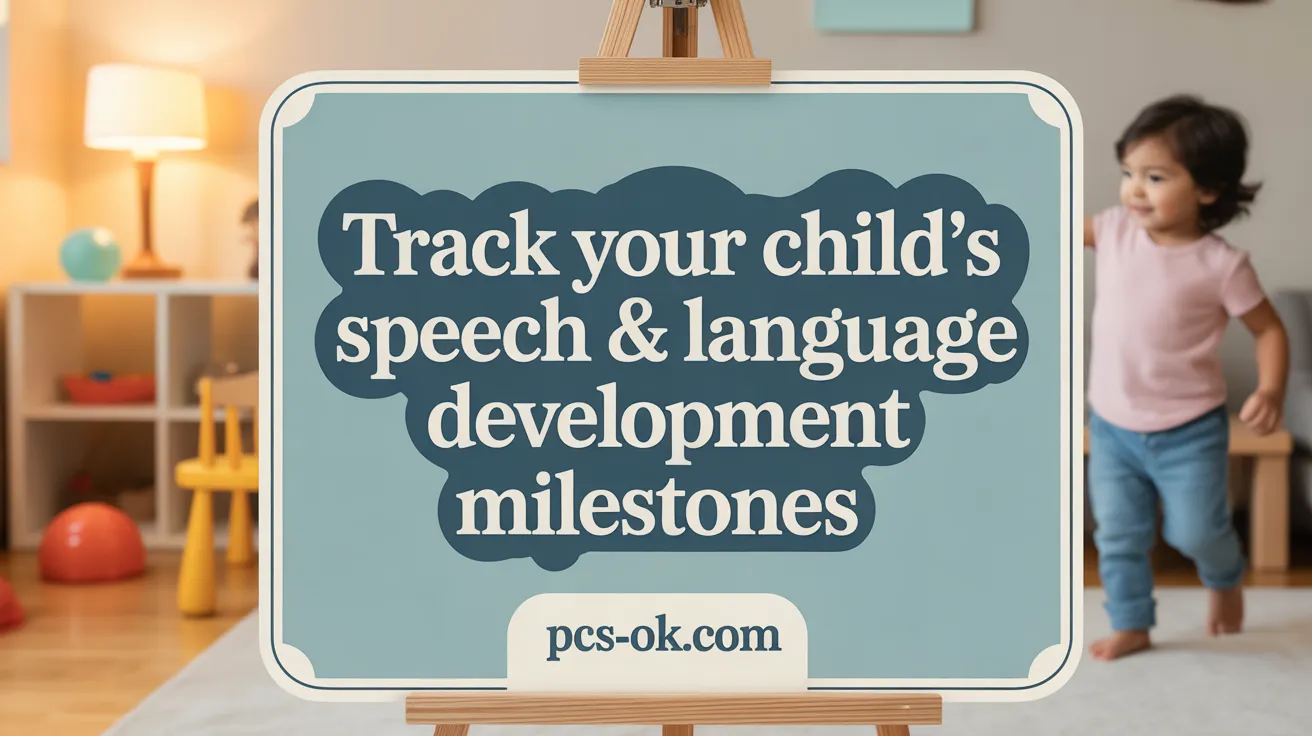
What are the developmental milestones related to speech and language in children?
Children go through a series of predictable stages as they develop their speech and language skills from birth to age five. Early on, by around 2 to 3 months, infants begin to coo and smile, signaling the start of social communication.
By the age of 12 months, most babies start to babble, producing repetitive consonant-vowel sounds like “ba” or “da.” They also begin to use simple gestures such as pointing or waving, which are important for early interaction.
Between 12 and 18 months, children typically start saying their first words, often around 50 by 18 months. They understand simple questions, imitate sounds, and begin to use gestures alongside words to communicate needs.
From ages 2 to 3 years, a significant vocabulary boom occurs, with children reaching over 100 words. They start combining words into simple two- or three-word phrases like “more milk” or “go park.” During this period, they also grasp basic concepts such as pronouns (I, you), prepositions, and spatial terms.
Between 3 and 4 years, children develop more complex language abilities. They form sentences with four or more words, recognize colors, and can describe objects and actions with increasing richness. Their speech becomes more intelligible, but some pronunciation errors may still be present.
At ages 4 to 5 years, language skills become more sophisticated. Children can engage in conversations, answer detailed questions, and use sentences of 8 or more words. They understand and produce more complex grammatical structures and demonstrate a broad vocabulary essential for academic and social success.
Early recognition of delays is crucial because children who lag behind these milestones might benefit from early speech therapy. Monitoring these developmental signs helps ensure children develop effective communication skills essential for their learning and social interactions.
Identifying Early Warning Signs of Speech and Language Delays
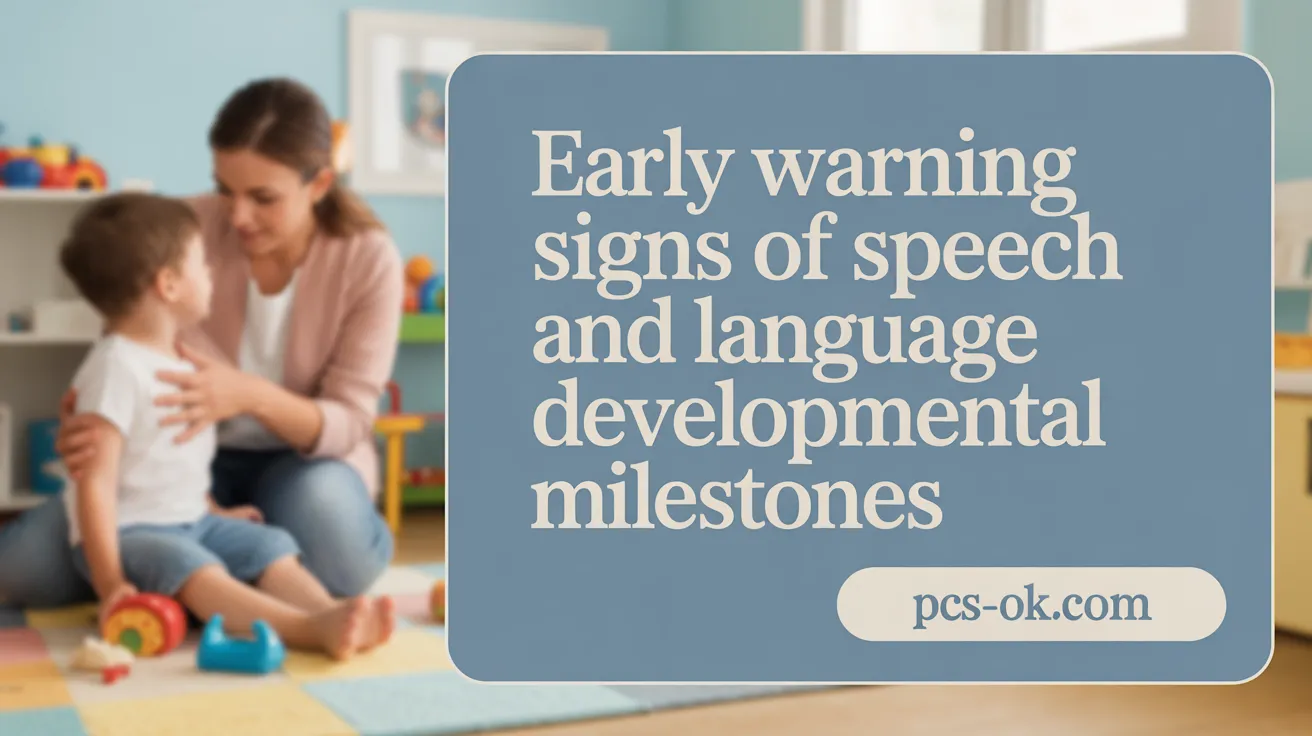
What are the early signs of speech and language delay in children?
Early detection of speech and language delays can make a significant difference in a child’s development. Common early signs include a lack of babbling or vocalizations by 6 to 9 months old, which is a typical milestone. By around 12 months, children usually start to gesture—such as pointing or waving—but if these gestures are absent, it might be a concern.
When children reach 16 months, most speak at least a few words; not doing so can indicate potential delay. They should also understand simple instructions like ‘bring me the toy’ or ‘do you want juice?’ A limited vocabulary—fewer than 50 words by age two—is often a red flag.
Between ages 2 and 3, children should begin combining words into simple phrases. Difficulty with this, or speech that is largely unintelligible, suggests a delay. Additionally, trouble imitating sounds, limited social interaction, or reluctance to participate in communication can be signs of underlying issues.
Recognizing these early warning signs and consulting with healthcare professionals like speech-language pathologists can lead to timely intervention, supporting better communication and social skills development.
What are the early warning signs of speech and language disorders that parents and caregivers should know?
Parents and caregivers should stay alert to specific developmental milestones and behaviors. Signs of speech and language difficulties include missing early gestures such as pointing or waving by 12 months, which normally indicate communication intent.
By 18 months, children should have a vocabulary of at least 10-20 words, with some using more. Failing to reach this vocabulary size, or not understanding simple commands, is concerning. If a child’s speech remains unclear beyond age three, with mispronounced sounds like ‘r,’ ‘s,’ or ‘l,’ or if they struggle to follow directions, these can be signs of underlying speech or language issues.
Another warning is if a child shows increased frustration when trying to communicate, or if their speech is not understandable to familiar listeners. Additional red flags include limited social interaction, not responding to their name, or little interest in vocal play.
Early identification of these signs allows parents and caregivers to seek assessments and prompt interventions, greatly supporting a child’s ability to develop effective communication skills and reducing potential social or learning difficulties.
Common Speech and Language Problems That Signal the Need for Therapy
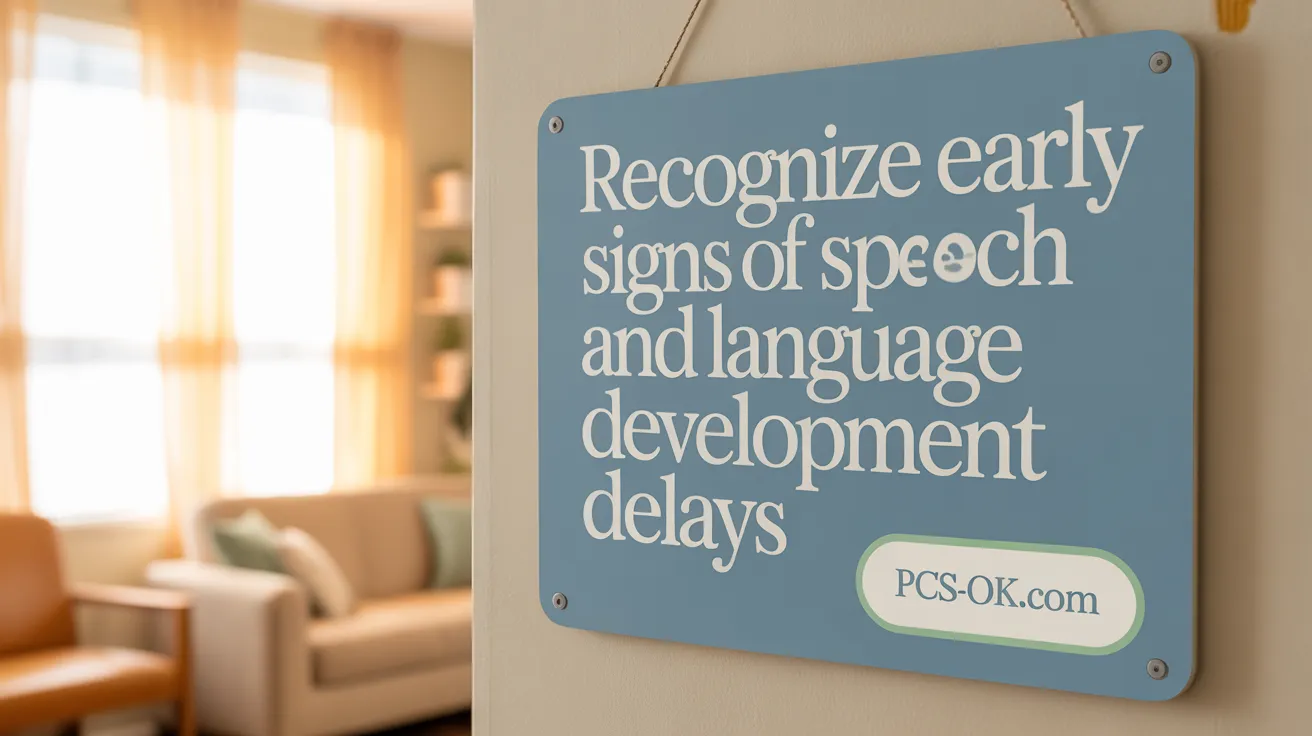
What communication issues may indicate a need for speech therapy?
Communication problems that suggest a child might benefit from speech therapy include a range of developmental signs. These include delays in reaching typical speech and language milestones, such as not babbling by 6 to 9 months or failing to use gestures like waving or pointing by around 12 months. Children who struggle to produce sounds or form words clearly beyond age 5 may have articulation or phonological disorders.
Furthermore, difficulty understanding or following simple directions by age 2 or 3 could point to receptive language delays. Limited vocabulary — such as using only a few words or not combining words into phrases — is another red flag. Other indicators include stuttering or repetitions, voice issues like hoarseness or nasal speech, and feeding or swallowing difficulties that can affect speech development. Recognizing these early signs allows for timely intervention, which can greatly improve a child’s communication skills.
What types of speech and language problems might require therapy?
Various challenges in speech and language may necessitate professional help. These encompass articulation disorders where children struggle with pronouncing sounds correctly, such as substituting ‘w’ for ‘r’ or omitting ending sounds. Fluency issues like persistent stuttering, which involves repeated sounds or syllables, also benefit from therapy to improve speech flow.
Voice disorders, such as hoarseness or a shrill voice lasting more than a few weeks, may need assessment and treatment. Speech sound disorders, including difficulty clarifying words or producing specific consonants and vowels, are common candidates for therapy.
On the language front, receptive delays involve trouble understanding spoken instructions, while expressive delays show in limited vocabulary or inability to form sentences. Children with social communication problems, like difficulty engaging with peers or interpreting social cues, may have autism spectrum disorders or pragmatic language issues that require targeted intervention.
Additional concerns like aphasia, apraxia of speech, resonance disorders, or selective mutism are also treatable with the help of speech-language pathologists, aiming to improve overall communication effectiveness.
When to Seek Professional Evaluation for Speech and Language Concerns
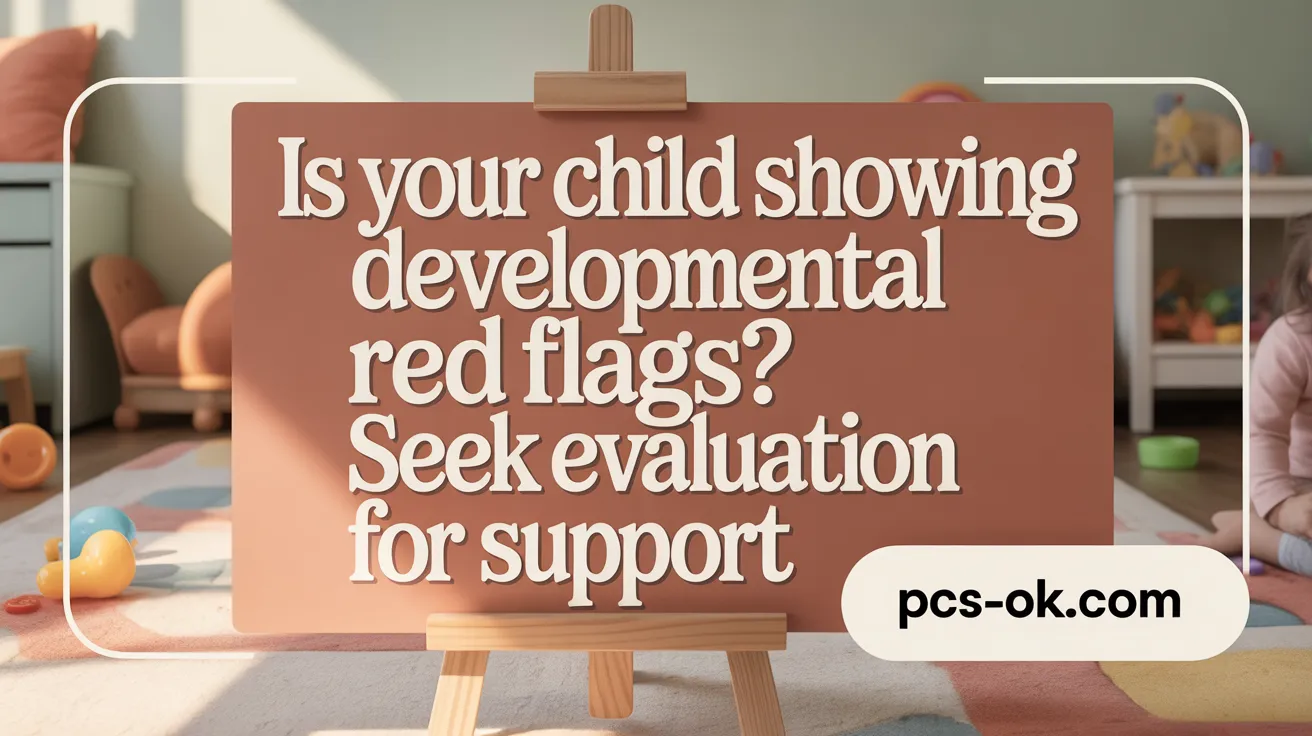
When should parents and caregivers seek professional evaluation for speech and language concerns?
Parents and caregivers should act promptly if their child shows signs of speech or language delays that persist beyond typical developmental milestones. Key indicators include limited speech sounds, such as only a few sounds and not using gestures like waving or pointing by 12-15 months.
Children who do not speak their first words by around 12 months, or fail to combine words into simple phrases by age two, warrant an assessment. Persistent unintelligibility of speech or limited vocabulary — fewer than 50 words by age 2 — are important signals.
Other warning signs include difficulty following directions, not understanding simple commands, and trouble expressing thoughts clearly. Signs such as stuttering, repetitive speech, or unusual facial expressions during speech can also indicate the need for evaluation.
Social interaction challenges, such as not responding to their name by 12 months or withdrawing from social engagement, further support the case for assessment. If a child is not babbling by 6 to 9 months, or displays frustration or avoidance when trying to communicate, consulting a professional is advisable.
Early diagnosis of speech and language issues is crucial. When identified early, speech therapy can address these challenges effectively, improving communication skills, social interaction, and academic success.
Delaying evaluation risks the development of more complex problems later, affecting the child’s confidence, learning, and future opportunities.
In summary, any persistent delay, unintelligibility, limited vocabulary, or social communication difficulties should motivate parents and caregivers to seek a professional evaluation. Intervention at the earliest signs can significantly enhance the child’s developmental trajectory.
Understanding What Speech Therapy Involves and Its Benefits
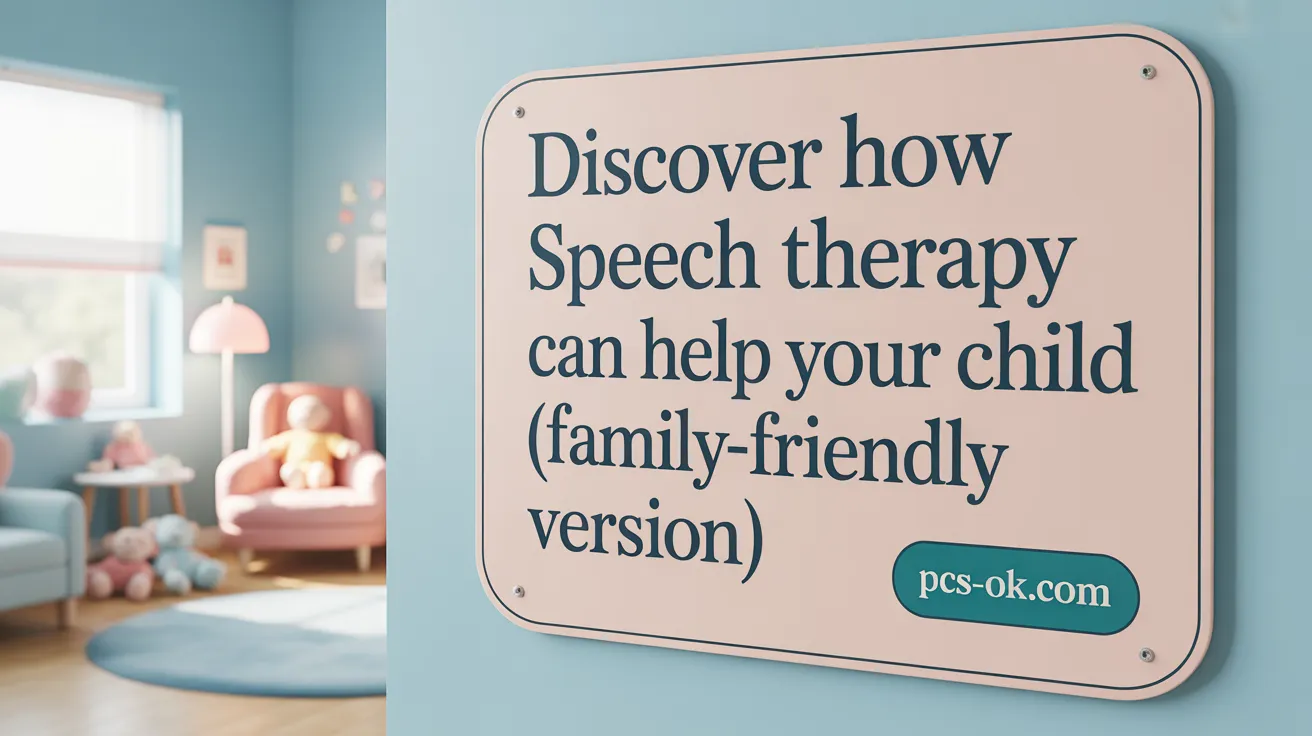
What does speech therapy involve and how can it benefit children with communication difficulties?
Speech therapy is a customized process that starts with an evaluation conducted by a speech-language pathologist (SLP). During this assessment, the therapist identifies the child’s specific speech, language, or swallowing challenges. Based on these findings, an individualized therapy plan is developed.
Typical therapy sessions last about half an hour and are designed to be engaging and tailored to the child’s age and needs. The activities often include exercises to improve mouth and tongue movements, such as practicing specific sounds, and may incorporate reading aloud, vocabulary building, and social skills training.
Therapeutic techniques are varied, but common approaches include play-based activities, visual aids, and communication tools like picture boards or signing. These methods help address a range of issues including articulation errors, fluency problems like stuttering, and difficulties with understanding or using language.
Children who undergo speech therapy often experience noticeable improvements in speech clarity and vocabulary. They also develop better social interaction skills, which are crucial for forming friendships and succeeding academically.
In addition to speech and language skills, therapy can support related areas such as feeding and swallowing, especially in children with oral-motor difficulties. Early treatment is beneficial in boosting a child’s confidence and independence.
Long-term benefits of speech therapy extend beyond improved communication. Enhanced speaking skills can lead to greater participation in classroom activities and social environments, fostering self-esteem and confidence. As children become more effective communicators, they are better equipped to succeed in school and build positive social relationships.
Overall, speech therapy provides essential strategies and skills that help children communicate more effectively, opening doors to new learning opportunities and social experiences. The earlier children receive intervention, the more positive their developmental outcomes tend to be.
Additional Considerations: Social and Feeding Challenges Affecting Communication
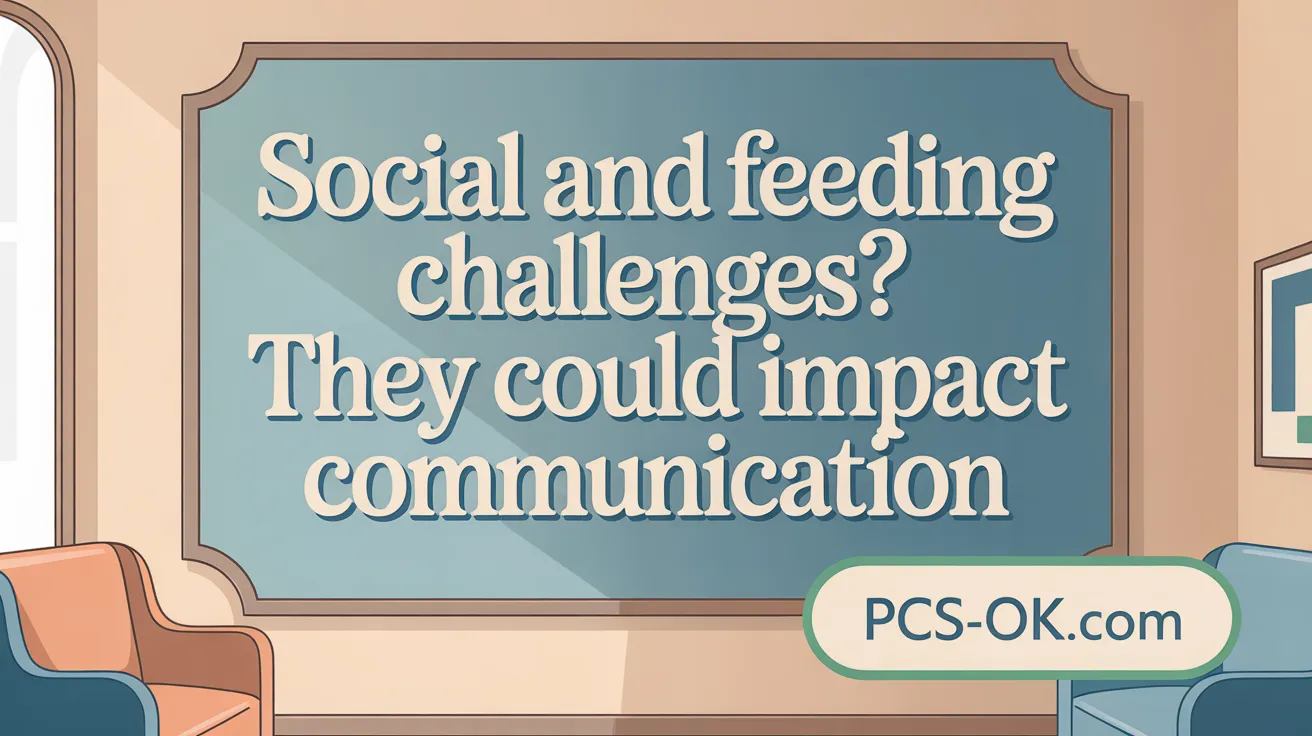
Social interaction difficulties as communication warning signs
Children who struggle to join conversations or interpret social cues may have underlying speech or language issues. For example, if a child is noticeably quiet at social gatherings or has trouble expressing their needs and thoughts, it could indicate a communication delay. Signs like difficulty making eye contact, limited gestures, or not engaging in play with peers are common red flags.
Feeding and swallowing problems related to speech development
Oral-motor skills are crucial not only for speech but also for feeding. Challenges such as difficulty sucking, chewing, or swallowing can signal speech delays or developmental concerns. These issues might also lead to health problems like inadequate weight gain, and can impact a child’s ability to participate in social eating situations.
Signs parents should watch for regarding oral-motor issues
Parents should be alert to signs such as prolonged feeding times, pocketing food, coughing or gagging during meals, drooling excessively, or a hoarse and gurgly voice. Also concerning are refusal to eat certain textures, biting or spitting up food, and difficulty managing various food textures and swallowing, which may all point to oral-motor control problems.
Impact of social and oral-motor challenges on learning and socialization
Ongoing difficulties in communication and feeding can hinder a child’s social development, making it harder to form friendships and participate in classroom activities. They can also affect academic progress, especially in reading and writing, due to related speech and language delays.
When to consult specialists for comprehensive evaluation
It is important to seek professional help if a child shows persistent speech sound errors, limited vocabulary, or difficulty understanding and following directions. Early consultation with speech-language pathologists and audiologists can lead to early interventions, improving outcomes. Signs such as not responding to their name by age one, not babbling by 9 months, or exhibiting frustration or avoidance behaviors with speech should prompt a consultation.
| Signs to Watch For | Typical Age Range | Possible Issues | Recommended Action |
|---|---|---|---|
| Limited speech sounds and gestures | 12-15 months | Speech delay | Speech therapy evaluation |
| Not forming two-word phrases | 18-24 months | Receptive or expressive delay | Professional assessment |
| Unintelligible speech or 50 words or fewer | 2-4 years | Speech disorder | Intervention by speech-language pathologist |
| Repeating sounds or words (stuttering) | 2+ years | Fluency disorder | Speech therapy consultation |
| Not responding to their name or difficulty following directions | 12 months–2 years | Hearing or processing issues | Audiological assessment |
Early detection and intervention are vital in supporting a child’s communication skills, especially when social and feeding challenges are present.
Taking Action: Supporting Your Child’s Communication Journey
Monitoring your child’s speech and language development is essential for early identification of potential challenges. Understanding milestones and recognizing warning signs empowers parents and caregivers to seek timely professional evaluations. Speech therapy offers effective support to help children overcome communication difficulties, improving their social interaction, academic performance, and overall quality of life. Early intervention can make a lasting difference, giving your child the tools they need to thrive in communication and beyond.
References
- 7 Signs Your Child May Benefit from Speech Therapy
- Signs Your Child Should See A Speech Therapist
- Early Identification of Speech, Language, Swallowing, and …
- 5 Warning Signs Speech Therapy for Your Toddler is Needed
- How to Know if Your Child Needs a Speech Evaluation
- Ten Signs Your Child May Need a Speech-Language …
- Understanding the Signs that Your Child Needs Speech …
- Does My Child Need Speech And Language Therapy?
